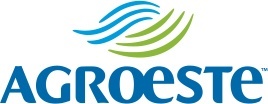A reduced deposit diet regimen is a customized eating plan that aims to lower the amount of fiber as well as undigested food in the intestinal (GI) thuốc herbal glucoactive system. This sort of diet is commonly suggested for people with certain clinical problems or those that have actually gone through particular clinical procedures. By limiting the intake of specific foods, a low residue diet aids to decrease bowel movements and lower feces volume, offering relief for numerous GI-related signs.
A reduced residue diet regimen is particularly designed to be mild on the digestion system. It restricts foods that are high in fiber, such as entire grains, nuts, seeds, as well as raw vegetables and fruits. Unlike various other dietary plans, a low residue diet regimen concentrates on taking in easily digestible and absorbable foods with low fiber content.
That Should Adhere To a Low Deposit Diet Regimen?
A low deposit diet plan is often suggested for people with specific clinical problems, consisting of inflammatory digestive tract illness (IBD), Crohn’s disease, diverticulitis, ulcerative colitis, as well as radiation enteritis. It might also be prescribed for those recuperating from particular stomach surgical treatments, such as bowel resection or colostomy.
The primary goal of a low residue diet plan is to provide momentary alleviation as well as give the GI tract time to heal. By minimizing the quantity of fiber and roughage in the diet plan, the gastrointestinal system experiences much less pressure as well as is able to recover better.
It is necessary to note that a reduced deposit diet is normally not a long-lasting service. Once the underlying condition or surgical recovery has actually boosted, people might gradually reintroduce high-fiber foods right into their diet plan under the assistance of a health care specialist.
What Foods Are Permitted on a Reduced Deposit Diet Plan?
A reduced residue diet mostly contains easily digestible foods that are mild on the GI tract. Below are some examples of foods that are usually permitted on a low deposit diet regimen:
- Improved grains, such as white bread, pasta, as well as rice
- Well-cooked veggies without skin or seeds, such as peeled off and also steamed potatoes or carrots
- Tender, lean meats, such as hen, turkey, or fish
- Eggs
- Canned or prepared fruits without skin or seeds
- Dairy items, such as milk, yogurt, and cheese
- Smooth nut butters
- Non-gas-producing liquids, such as clear broth or strained juices
These foods are less complicated to digest and do not leave a considerable amount of undigested residue in the GI system. It is important to bear in mind that individual nutritional requirements may differ, as well as it is always best to speak with a medical care specialist or registered dietitian to create an appropriate low deposit diet plan based upon specific health and wellness needs.
Foods to Avoid on a Reduced Residue Diet Plan
To efficiently reduce fiber consumption as well as reduce defecation, individuals complying with a reduced residue diet regimen should prevent specific foods. These consist of:
- Whole grains, such as whole wheat bread as well as wild rice
- Cereals with included nuts, seeds, or dried out fruits
- Raw vegetables and fruits
- Legumes, such as beans as well as lentils
- Nuts as well as seeds
- Crunchy or coarse treats, such as popcorn or crackers
- Fatty and fried foods
- Caffeinated and carbonated beverages
These foods are high in fiber as well as can aggravate the GI system, triggering enhanced bowel movements as well as discomfort. By staying clear of these foods, people can efficiently handle their signs and symptoms and advertise healing in the digestive system.
Meal Preparation as cardioton caps 2290 well as Tips for a Reduced Residue Diet Plan
Producing meal plans that comply with a low residue diet regimen can be difficult, however with cautious preparation as well as the appropriate strategy, it is possible to take pleasure in a variety of flavorful meals. Here are some helpful ideas for meal preparation on a reduced residue diet plan:
- Focus on little, regular meals to relieve digestion
- Cook vegetables up until they are soft and easily mashed
- Pick lean protein resources to minimize digestion stress
- Try out natural herbs and also spices to boost taste without including fiber
- Select cooking techniques such as boiling, steaming, or cooking instead of frying
- Keep moistened by consuming alcohol plenty of water throughout the day
- Consider keeping a food journal to track triggers and identify trouble foods
Remember, it is crucial to function very closely with a medical care expert or licensed dietitian to develop a customized low deposit diet strategy that meets specific dietary requirements and objectives.
Finally
A reduced deposit diet regimen is a customized eating plan that restricts the consumption of fiber as well as roughage, supplying short-term alleviation for people with specific medical conditions or recovering from gastrointestinal surgical procedures. By adhering to a reduced residue diet, individuals can help reduce defecation as well as reduce GI-related symptoms. It is important to consult with a health care professional or registered dietitian to create an appropriate low deposit diet plan based upon specific requirements and also health requirements.
Keep in mind, a low deposit diet regimen is not a lasting solution, and as soon as the underlying condition enhances, it is necessary to gradually reintroduce high-fiber foods right into the diet. With proper preparation as well as support, people can efficiently navigate a reduced residue diet regimen as well as sustain their digestion health.

Deixar Um Comentário